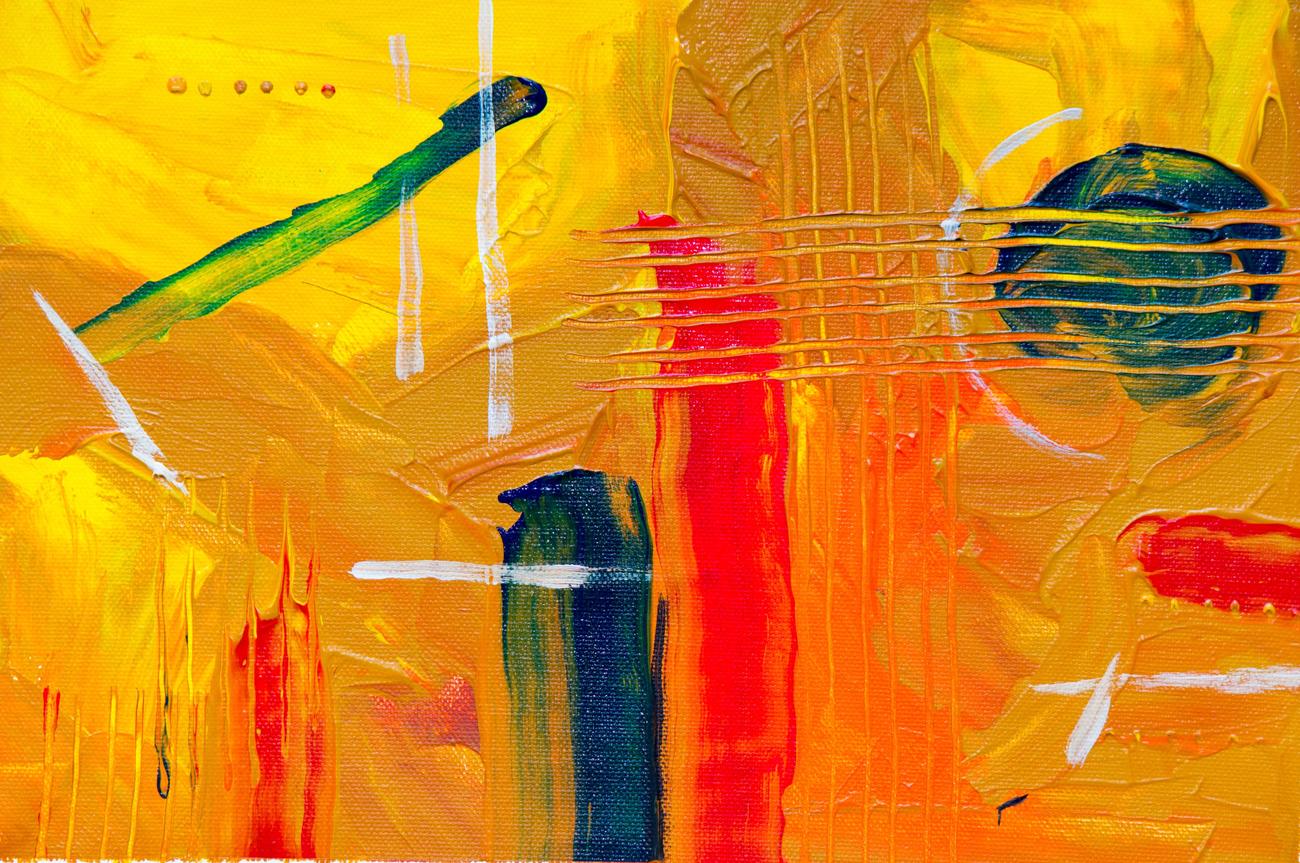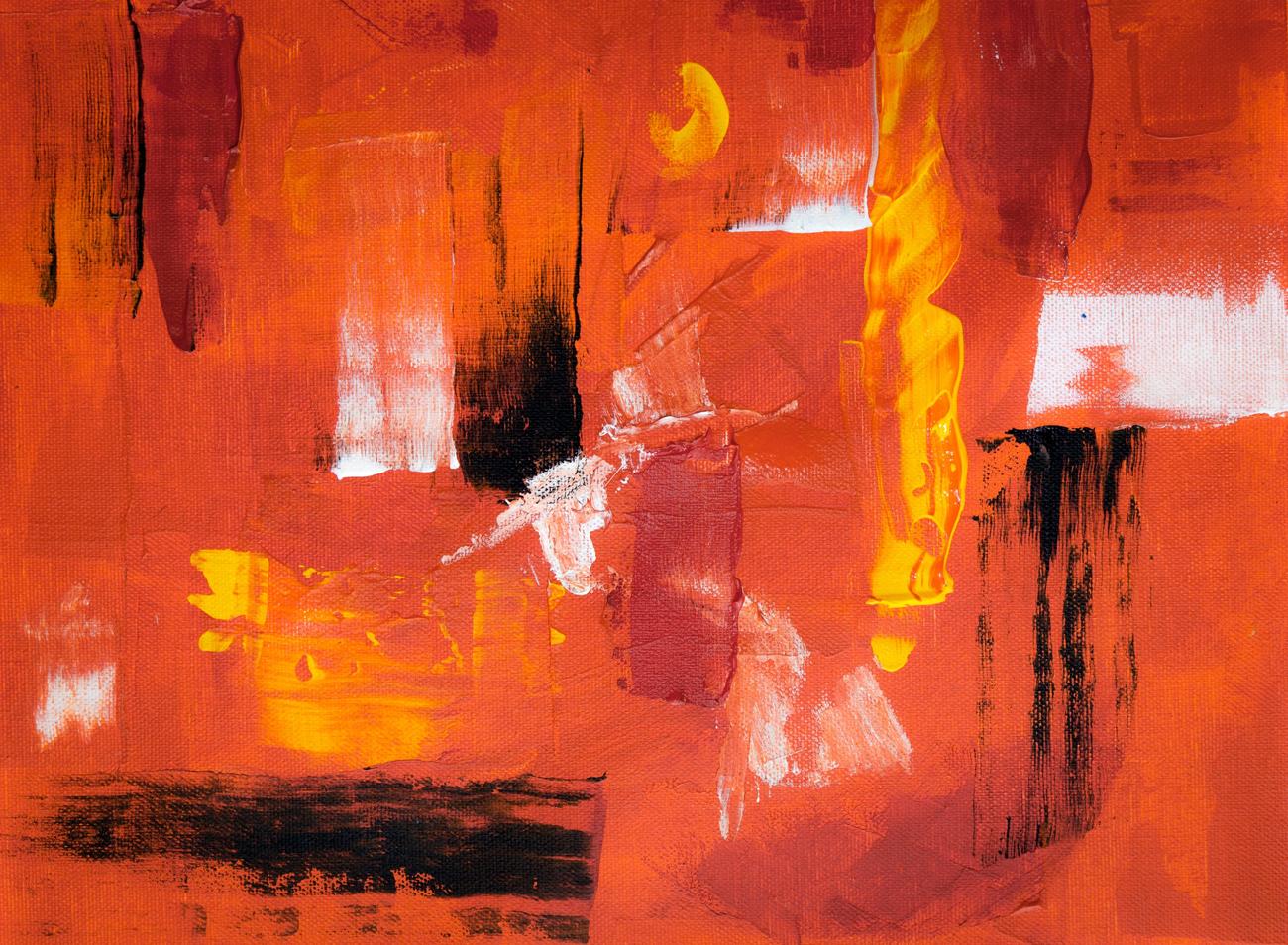Step into the enchanting world of art as we unravel the enigmatic charm of painting. In this article, we will explore the mesmerizing history of painting, delving into the captivating stories and scientific facts that have shaped this timeless form of expression. From the brushstrokes of masterful artists to the secrets hidden within their canvases, prepare to embark on a journey of discovery and immerse yourself in the captivating realm of painting.

Facts About Painting
Did you know that paint, which we often take for granted, has a long and fascinating history dating back thousands of years? Today, let’s embark on a journey through time as we explore the captivating and sometimes surprising facts about painting.
Toxicity and Safety
When it comes to paint, safety should always be a top priority. Even in the modern era, paint can still be toxic in many countries. So, before grabbing that brush, it’s important to be aware of the potential risks and take necessary precautions to protect yourself and the environment.
Training and Expertise
Contrary to what you might think, most professional painters receive only two days of training. That’s right, just two days! This might seem surprising, considering the skill and precision required in producing a masterpiece. However, it speaks to the innate talent and natural flair that many painters possess. It also highlights the importance of experience and continuous learning within the industry.
The Growth of the Painting Industry
While painting is an integral part of our lives, it may surprise you to learn that the painting industry is growing slower than other sectors. This could be attributed to various factors, such as advancements in technology and changing consumer preferences. Nonetheless, the art of painting remains a timeless expression of creativity and beauty.
The Economics of Painting
Have you ever wondered how much a professional painter earns? On average, the hourly rate for these skilled individuals is $21. Painting an average-size home interior can cost between $2,500 and $8,000. These figures underline the value placed on quality craftsmanship and the time-intensive nature of the work involved.
Choosing the Right Paint
When it comes to painting the interior of a space, using water-based paint is often recommended. Not only is it better for the environment, but it also helps to improve indoor air quality. Water-based paints have lower levels of volatile organic compounds (VOCs) compared to their oil-based counterparts, making them a healthier and more eco-friendly choice.
Ancient Origins of Paint
Let’s travel back in time to uncover the origins of paint. The history of this versatile medium can be traced back an astounding 30,000 years. From cave walls adorned with intricate symbols to the masterpieces of renowned artists throughout history, paint has left an indelible mark on the human story. Its evolution reflects the evolution of our artistic expression as a species.
Waste and Preservation
Did you know that approximately 10% of all paint bought in the US ends up being thrown away? Surprisingly, the majority of this discarded paint is from residential projects. This waste reveals the importance of responsible paint usage and disposal. By being mindful of our paint consumption and exploring sustainable alternatives, we can help protect our environment.
Historical Curiosities
Intriguing connections between paint and historical artifacts continue to emerge. For example, the oldest house paint was made of lime mixed with milk and sometimes natural pigments. This early form of paint, dating back thousands of years, demonstrates the resourcefulness and creativity of our ancestors.
Even the legendary King Tutankhamun’s tomb was painted with milk paint, emphasizing the longevity and enduring charm of this ancient technique. These historical curiosities remind us of the rich tapestry of painting throughout the ages.
Through these enthralling and informative facts about painting, we uncover the hidden stories, techniques, and historical context that lie within this captivating art form. So, the next time you gaze upon a painting, remember that there is so much more to it than meets the eye.
“Painting is not just colors on a canvas, but a window into history, culture, and the human experience.”
Facts About Painting
Did you know that art holds a fascinating world of secrets and wonders? Discover amazing facts about art that will leave you in awe! From the captivating brushstrokes of renowned painters to the mesmerizing history of painting, there is so much to explore. Dive into the vivid stories that unfold on canvas, with a journey that takes you deep into the realms of artistic expression. Click here to unveil the facts about art and let your imagination run wild! (Source: ../facts-about-art)
Embark on a voyage through time as you uncover the captivating history of painting. Explore the evolution of this timeless art form from ancient cave paintings to the Renaissance masterpieces. Experience the rise and fall of various artistic movements that have shaped the very essence of painting itself. Find yourself enchanted by the tales of legendary artists and the incredible works that have stood the test of time. Unleash your inner art historian and unravel the mysteries of the history of painting. (Source: ../history-of-painting)
Calling all art enthusiasts! Get ready to be mesmerized by some mind-blowing fun facts about painters. Delve into the eccentric lives and extraordinary talents of painters who pushed the boundaries of creativity. From Van Gogh’s ear-slicing antics to Warhol’s pop-art revolution, the world of painters is filled with colorful characters and intriguing tales. Brace yourself for an exhilarating journey into the world of art, where every brushstroke tells a story. Uncover the fun facts about painters that will leave you amazed! (Source: ../fun-facts-about-painters)
Are you a student fascinated by the world of art? Prepare to be astounded by some mind-boggling art facts for students! Discover fascinating insights into the creative process, artistic techniques, and the influential figures who have shaped the art world. Whether you’re studying art history or simply have an artistic curiosity, these art facts for students will open your eyes to a whole new universe of imagination and inspiration. Get ready to ignite your passion for art with these captivating discoveries! (Source: ../art-facts-for-students)
Calling all art enthusiasts! Dive into the enchanting world of paint brushes and uncover some fun facts about paint brushes that will leave you amazed. From the different types of bristles to the evolution of brush-making techniques, there’s more to these humble tools than meets the eye. Discover how these seemingly simple objects have played a pivotal role in shaping the art world throughout history. Get ready to be captivated by the artistry behind the brush, as you unravel the secrets of this essential artist’s tool. Click here to delve into the fun facts about paint brushes and unlock a new appreciation for these magical instruments. (Source: ../fun-facts-about-paint-brushes)
The Fascinating History of Painting
Painting is an ancient art form that has captivated humanity for thousands of years. From the earliest cave paintings to the masterpieces of the Renaissance, the history of painting is a captivating journey through time and artistic expression. Let’s dive into the enigmatic charm of painting and explore some intriguing facts along the way.
The Origins of Painting
The origins of painting can be traced back at least 30,000 years, when early humans utilized natural pigments and charcoal to create stunning images on cave walls. These primitive paintings provide us with a glimpse into the lives and beliefs of our ancestors, as well as their remarkable artistic talents. Each stroke, each pigment, was a testament to their creativity and their desire to communicate through visual storytelling.
“Ancient cave paintings serve as a timeless testament to the creativity and artistic expression of early humans.”
From Lime and Milk to Modern Marvels
As the years passed, painting techniques evolved alongside human civilization. In ancient times, the oldest house paint was made by mixing lime with milk and sometimes natural pigments. Remarkably, even the illustrious King Tutankhamun’s tomb was adorned with paint made from milk, showcasing the resourcefulness and ingenuity of ancient artisans.
“The use of milk paint in King Tutankhamun’s tomb highlights the ingenuity of ancient painters and their ability to transform ordinary materials into extraordinary works of art.”
It wasn’t until the 19th century that paint as we know it today began to take shape. Sherwin Williams, a renowned name in the painting industry, introduced the first “ready-to-use” paints in 1866. They also revolutionized paint storage with the invention of the resealable tin paint can. These innovations allowed for greater convenience and accessibility in the world of painting.
The Art of Waste and Responsibility
While painting has come a long way, it is essential to address the issue of waste and responsible usage. Astonishingly, approximately 10% of all paint purchased in the US goes to waste, with the majority being residential paint projects. This staggering statistic emphasizes the need for responsible paint usage and disposal.
“Responsible paint usage and disposal are paramount in preserving our environment and minimizing waste.”
Painting as a Window into History
Painting goes beyond mere colors on a canvas. It serves as a window into history, culture, and the human experience. Each stroke of the brush carries with it the weight of historical significance and the unique perspective of the artist. From Renaissance masters like Leonardo da Vinci to trailblazing contemporary artists, painting truly encapsulates the essence of our shared human narrative.
“Through painting, we can delve into the rich tapestry of history, culture, and the human experience, allowing us to connect with the past in a profound and meaningful way.”
In conclusion, the history of painting is a captivating tale of human ingenuity, creativity, and expression. From the ancient cave paintings to the technological advancements of the modern era, painting continues to enrapture and inspire. By unraveling the secrets behind famous paintings and exploring the evolution of techniques, we can gain a deeper appreciation for the boundless beauty and significance of this timeless art form.
“The mesmerizing history of painting unveils a world of artistic triumphs, cultural revelations, and human connections, inviting us to immerse ourselves in the wondrous realm of visual expression.”
Scientific Facts About Painting
Painting, as an art form, has a rich history that spans thousands of years. From the ancient cave paintings discovered in Indonesia and Spain dating back over 40,000 years to the masterpieces of artists like Leonardo da Vinci and Vincent van Gogh, paintings have captivated humanity and left an indelible mark on our culture and history. In this section, we will delve into some intriguing scientific facts about painting that shed light on the enigmatic charm of this timeless art form.
1. The Science of Colors and Emotions
When we look at a painting, colors have the power to evoke emotions and influence our mood. The science behind this lies in the field of color psychology. Certain colors have been found to elicit specific emotional responses in people. For example, vibrant warm colors like red and orange can evoke feelings of excitement and energy, while cooler colors like blue and green can create a sense of calmness and tranquility. This knowledge of color psychology has been used by artists throughout history to enhance the impact and message of their paintings.
“Colors in painting hold a remarkable power, with the ability to evoke emotions and create a profound impact on the viewer. From the vibrant warmth of red to the soothing hues of blue, artists have harnessed the science of colors to elicit emotional responses in their audience.”
2. The Chemistry of Paint
Painting involves the application of pigments or paint to various surfaces like canvas, paper, or wood. But have you ever wondered about the chemistry behind paint? Paint consists of pigments, binders, solvents, and additives. Pigments give paint its color, while binders hold the pigments together and bind them to the surface. Solvents, like water or oil, dissolve the binders and pigments to create a workable consistency, and additives enhance properties such as drying time, durability, or texture.
“Behind every stroke of the brush lies a fascinating chemistry. Paint is a carefully concocted mixture of pigments, binders, solvents, and additives, each playing a crucial role in bringing colors to life.”
3. The Impact of Technology on Painting
The advancement of technology has had a significant impact on the world of painting. Traditional painting techniques have evolved to accommodate new mediums and tools, leading to exciting possibilities for artists. Digital painting has emerged as a popular form of artistic expression, enabling artists to create stunning works on electronic devices. Moreover, technology has opened up new avenues for sharing and preserving paintings, with digitization allowing for widespread access to artwork across the globe.
“The digital revolution has brought forth a new era of artistic possibilities. Through the fusion of technology and traditional painting techniques, artists can now explore uncharted realms, bringing their creations to life on electronic canvases.”
4. A Window into History and Culture
Paintings offer a unique perspective into the history and culture of different societies. Artists often infuse their works with elements of the zeitgeist, reflecting the social, political, and cultural climate of their time. From Renaissance masterpieces to contemporary art, paintings serve as an invaluable record of human experience and provide insight into the diverse narratives that shape our world.
“A painting is not merely colors on a canvas; it is a living testament to the history and culture of a society. Each brushstroke carries the weight of an era, inviting us to peer into the past and glean wisdom from the strokes of a master.”
5. The Fascinating World of Conservation Science
Conservation science plays a vital role in preserving and restoring paintings for future generations to appreciate. Experts use scientific methods, such as imaging techniques, spectroscopy, and chemical analysis, to uncover hidden layers, authenticate artworks, and prevent deterioration. By combining art and science, conservators ensure that paintings endure the test of time, safeguarding their beauty and cultural significance.
“Conservation science acts as a guardian of artistic treasures. Through a marriage of art and science, experts unlock the secrets hidden within paintings, allowing us to conserve and appreciate these masterpieces for generations to come.”
Table:
Markdown format of a table:
| Fact | Description |
|---|---|
| The world’s oldest paintings | Paintings dating back over 40,000 years have been discovered in caves in Indonesia and Spain, revealing the earliest forms of artistic expression. |
| The Mona Lisa by Leonardo da Vinci | Leonardo da Vinci’s masterpiece, the Mona Lisa, remains one of the most famous paintings in the world, showcasing the artist’s exceptional skill and technique. |
| Vincent van Gogh’s challenging career | Despite being celebrated today, Vincent van Gogh struggled to sell his paintings during his lifetime, with only one sale recorded. |
| Evolution of painting techniques | Throughout history, painting techniques have evolved, influenced by cultural traditions, changing social positions, and the development of new materials. |
| Impact of World War II on painting | World War II brought about shortages in key paint ingredients, such as linseed oil, and led to the rise of acrylic paints as an alternative. |
Vincent van Gogh’s The Starry Night: Exploring the Depths of Art
[youtube v=”wk9L1N9bRRE”]
Vincent van Gogh, one of the most renowned artists in history, spent just over a year at a mental asylum outside Saint-Rémy in Provence. Initially, it was planned for him to go to a larger public institution in Marseille. However, it was in the smaller asylum at Saint-Rémy, with only 41 patients, that van Gogh’s creativity thrived. The doctors recognized that his survival depended on his ability to paint and create art. Thus, he was given the space and freedom to do so.
During his stay at the asylum, van Gogh’s work ethic was stronger than ever. Despite his circumstances, he managed to complete at least 150 paintings, averaging about one painting every other day. Most of his works from this period consisted of optimistic landscapes, reflecting his surroundings and the beauty he found in nature.
Contrary to popular belief, van Gogh was not always in a state of madness. Although he did experience extreme manic episodes, he was lucid and rational for the most part. He was highly intelligent, well-read, and articulate, speaking four languages. He had lifelong friends with whom he maintained regular correspondence. However, he struggled to find his place in the world and grappled with his mental health.
After a challenging period living with Paul Gauguin, van Gogh experienced an acute manic episode that led to hallucinations and hearing voices. It was during this time that he infamously cut off his own ear. The doctors at the asylum diagnosed him with epilepsy and most likely bipolar disorder, accompanied by auditory hallucinations and syphilis. Surprisingly, recent discoveries suggest that van Gogh may have been one of the sanest patients at Saint-Rémy. The asylum had a positive effect on him, providing him with a sense of stability and allowing him to focus on his work. In fact, during his time at the asylum, he was able to paint about 75% of the time.
The founder of the Saint-Rémy asylum believed in the healing power of art and nature. He created extensive gardens for the patients, providing them with a serene and calming environment. This setting, combined with the freedom to paint, greatly influenced van Gogh’s artistic output.
Van Gogh’s two years in Paris leading up to his time at the asylum played a crucial role in shaping his unique style. He was exposed to the works of impressionist painters, such as Monet and Pissarro, as well as a younger generation of artists who would become his lifelong friends. He was also influenced by Japanese prints, which had a transformative effect on his art. These experiences laid the foundation for his later, more radical works like The Starry Night.
The Starry Night, painted on the 18th of June 1889, has become an icon of art history. Van Gogh’s work often evokes a sense of madness, but it is important to note that his mental illness did not drive his creativity. Rather, he created in spite of it. The painting depicts the view from his asylum window, capturing the beauty and serenity of the night sky. Van Gogh’s signature short, thick brush strokes and vibrant color palette bring the sky to life in a way that reflects his emotions and experiences.
While the accuracy of the stars and the moon in The Starry Night has been questioned, the painting represents more than a scientific observation. It is an emotional interpretation of the night sky as van Gogh perceived it. The swirling galaxies and vibrant colors suggest a deep spiritual connection to the infinite. The stars provided solace and comfort to van Gogh during his time at the asylum, and he sought to convey that sense of solace through his art.
Sadly, van Gogh did not live to see the impact of his work. Just two months before his death, his paintings were displayed in a major exhibition in Paris, attended by the President of France. He was on the verge of success, but tragically, he took his own life less than a year later.
Vincent van Gogh’s legacy as an artist is immeasurable. His ability to convey emotions through vibrant colors and bold brush strokes paved the way for modern art. The Starry Night, with its swirling skies and ethereal beauty, remains a testament to van Gogh’s unique artistic vision. Despite his struggles with mental illness, van Gogh’s art continues to captivate and inspire audiences around the world.
Note: This article serves as a section between an introduction and conclusion. Please make sure the transition at the beginning and end is smooth.
FAQ
Question 1: What is the history of painting?
Answer 1: Painting has a long history dating back thousands of years, with the oldest known paintings discovered in caves in Indonesia and Spain estimated to be over 40,000 years old.
Question 2: Who painted the Mona Lisa?
Answer 2: The Mona Lisa is one of the most famous paintings in the world and was painted by Leonardo da Vinci.
Question 3: How successful was Vincent van Gogh during his lifetime?
Answer 3: Vincent van Gogh only sold one painting during his lifetime, despite being one of the most celebrated artists today.
Question 4: How did painting evolve as an art form over the years?
Answer 4: Painting as an art form dates back to prehistoric cave paintings, and earlier cultural traditions largely controlled the craft and subject matter of painting.
Question 5: What impact did World War II have on the paint industry?
Answer 5: World War II had an impact on the paint industry, with shortages of linseed oil and the rise of acrylic paint.
- Sept 31 Myth: Unveiling Calendar Secrets - March 18, 2025
- How Long & Till December 18, 2025: Accurate Countdown Guide - March 18, 2025
- Discover Japanese Artists: A Complete History - March 18, 2025
















